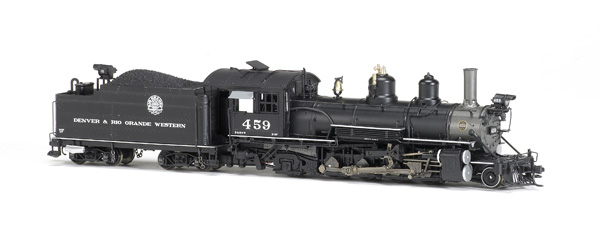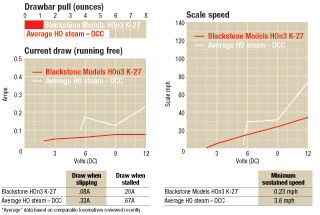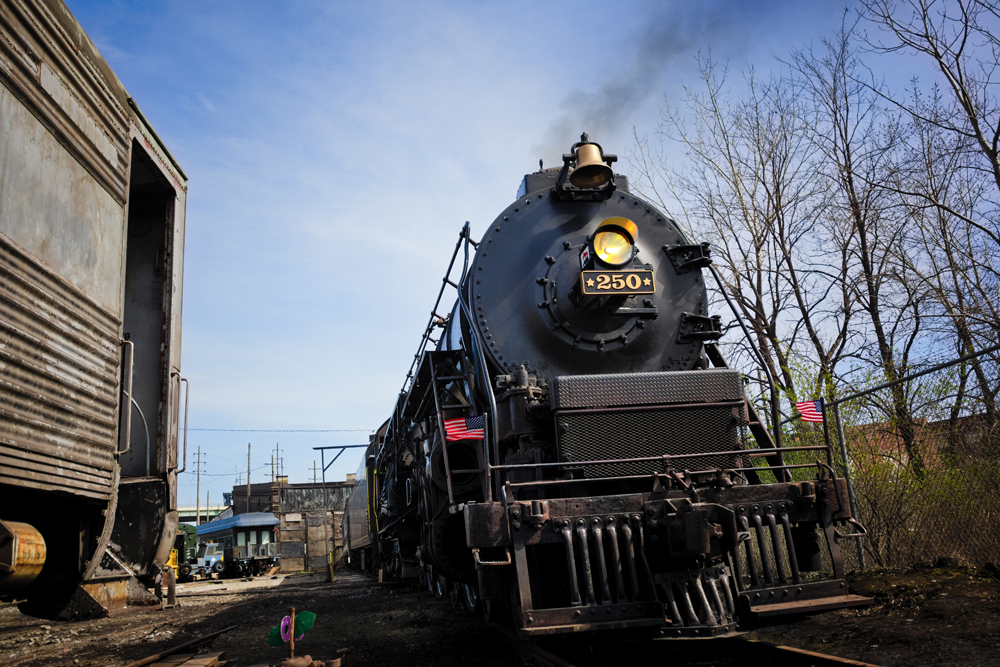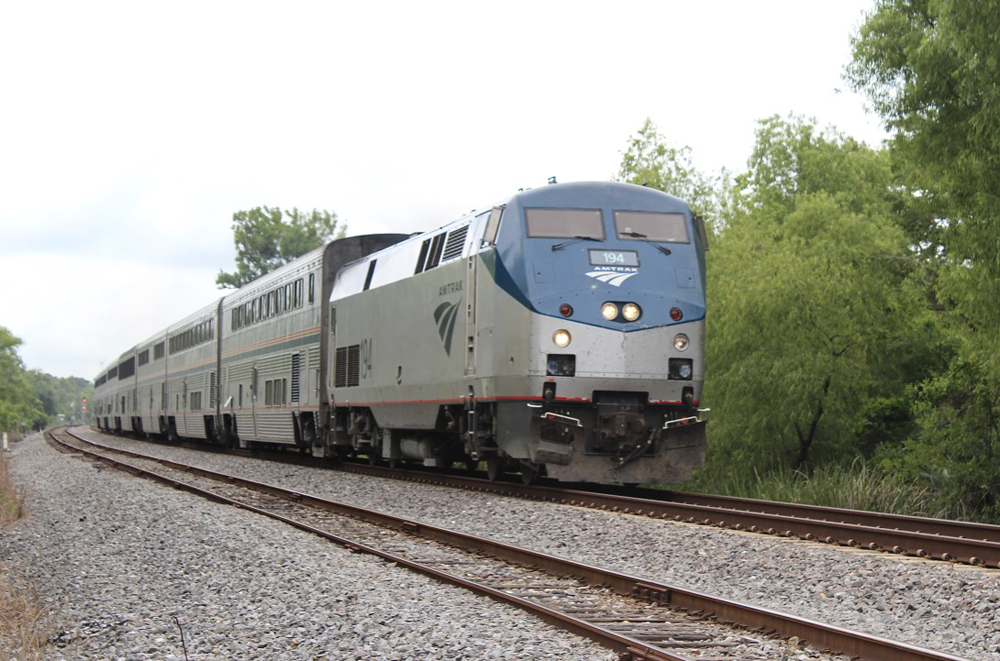2-8-2s from Baldwin Locomotive Works. By 1917, the railroad converted the locomotives from compound-cylinder drive to simple-expansion cylinders. After 1924, the locomotives were given the class designation of K-27, but train crews usually referred to the low-slung outside-frame steamers as mudhens. Most of the K-27s were scrapped by the 1950s, but two mudhens are still in service today on tourist railroads in Colorado and Michigan.
An extensive history and drawings of these locomotives can be found in the March and June 1973 issues of Model Railroader.
The model is made primarily of die-cast metal, and the quality of the molded and separately applied detail is excellent. Placement of the piping and appliances all match prototype photos. The model also includes a user-applied cinder catcher and pilot toolbox.
The cab features a high level of detail. All cab windows have glazing, and the side cab windows have separately applied sunshades and open wind deflectors. Inside, the detailed boiler backhead has red-painted valve handles and silver-painted gauges and water glass. The interior walls and cab ceiling are painted green.
The locomotive’s tender, including the archbar trucks, are also die-cast metal. The front of each sideframe is attached to the tender frame by metal safety chains.
Paint coverage is smooth, including silver stripes along the running boards and the tender sill. The pilot wheel tires and cylinder heads are also painted silver.
Our sample came decorated with the 1930s-era Moffat Tunnel/Royal Gorge herald on its tender. All lettering is crisp, including “Keep off” stencils on the tender and “Drain daily” along the air reservoirs. The builder’s plate is readable under magnification and has the correct serial number: 21936.
A round plug keeps the locomotive and tender semi-permanently coupled. The plug protects the wires connecting the locomotive to the electronics in the tender.
After removing four screws from the tender frame, I could lift off the tender shell. The speaker faces down toward an open grill in the tender frame. The printed-circuit (PC) board and DCC decoder are mounted to the top of the speaker.
Price: $339.00 (DC-only),
$419.00 (DCC-equipped),
post-1943 versions of no. 455
have slightly higher prices
Manufacturer
Blackstone Models
A division of SoundTraxx
210 Rock Point Drive
Durango, CO 81301
Road names: Denver & Rio Grande Western “button” herald nos. 455 (with green boiler), 456, 459; “flying Grande” herald, nos. 453, 454, 461, 463, 464; Rio Grande Southern nos. 461, 455 in unweathered or weathered post-1943 versions; painted and unlettered
In DC, our sample had an extremely slow minimum sustained speed of .23 HO scale miles per hour. Like the prototype, the Blackstone mudhen isn’t a speed demon. The cranks on its outside frame were a flurry of motion as the K-27 accelerated linearly to a top speed of 34 mph at 12 volts.
Slow and steady speed performance was also impressive in DCC. Under 28 speed steps, the locomotive started moving in speed step 1 at 2.9 scale miles per hour and accelerated to 36 mph in speed step 28. Slow speed performance was even better under 128 speed steps as the engine crawled at 1.6 mph.
The Tsunami decoder also allows you to choose between 14 preset speed tables, using CV 25. This powerful decoder has a multitude of other programming options and supports Ops Mode programming so that you don’t need a programming track. An extensive, easy-to-follow CD-ROM user’s guide is included.
The K-27 ran through a Micro-Engineering HOn3 no. 6 turnout without derailing or having any interruptions in the sound.
All drivers and tender wheels pick up track power
Blackened metal Walschaerts valve gear and engine and tender wheels (in gauge)
DCC version includes dual-mode sound decoder
Drawbar pull: 1.28 ounces (equivalent to 18 freight cars on straight and level track)
Front and rear Kadee no. 714 couplers (at correct height)
Minimum radius: 18″
Prototype-specific cylinders and other details
Weight: 11 ounces
A particularly fun feature is Fireman Fred. When the K-27 was stopped I randomly heard Fred shoveling coal or using his grease gun, and other effects.
In DCC, effects triggered by function buttons include boiler blowdown, a water stop, the bell, and long or short whistle blasts.
After having colleagues who’ve ridden behind real K-27s listen to the Blackstone mudhen, they declared the sounds, especially the whistle, spot-on. By programming CV 115 you can select between seven different whistle types, from a D&RGW single-chime to a Baldwin five-chime.
The highly detailed HOn3 K-27 captures the looks, sounds, and motion of a real Rio Grande mudhen.














